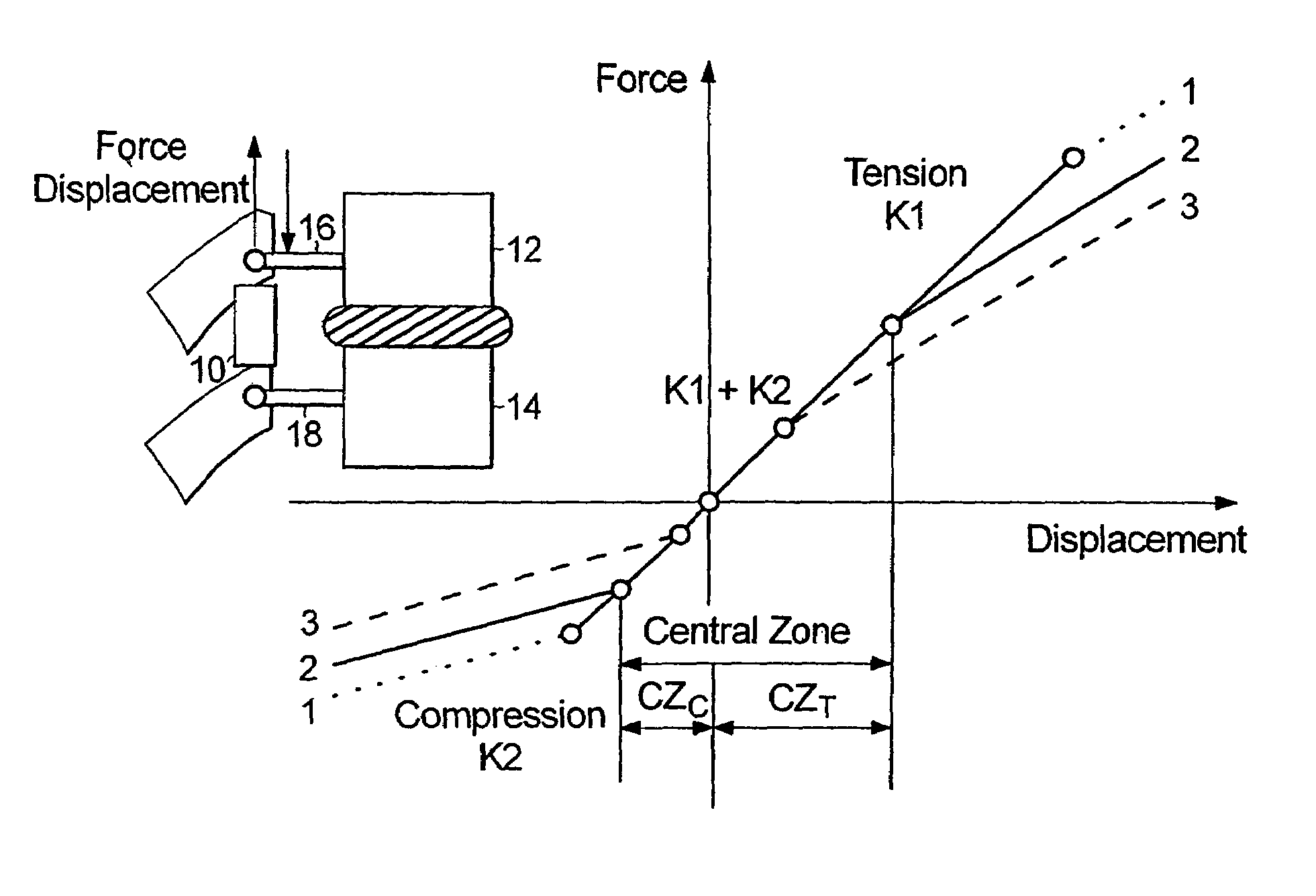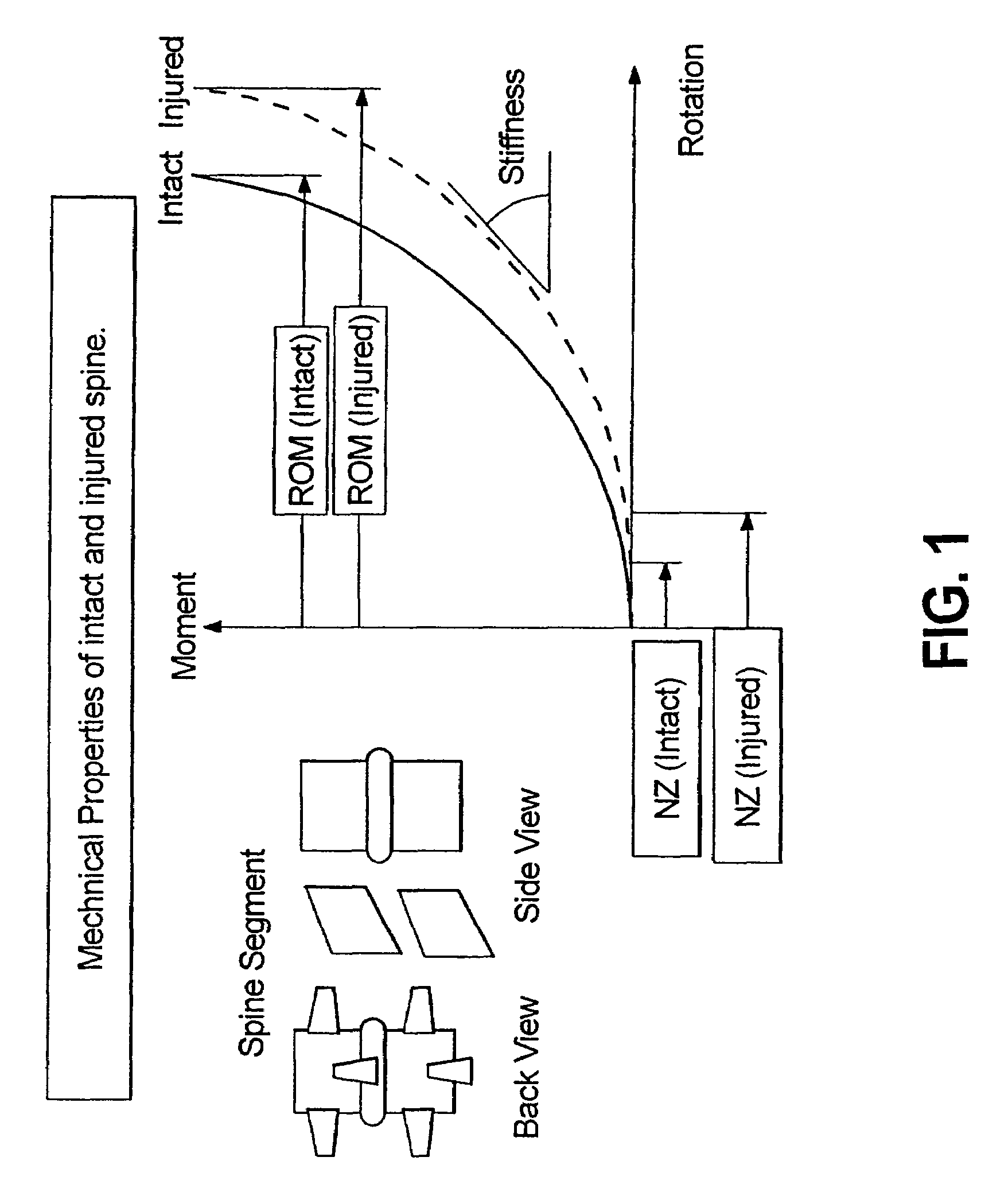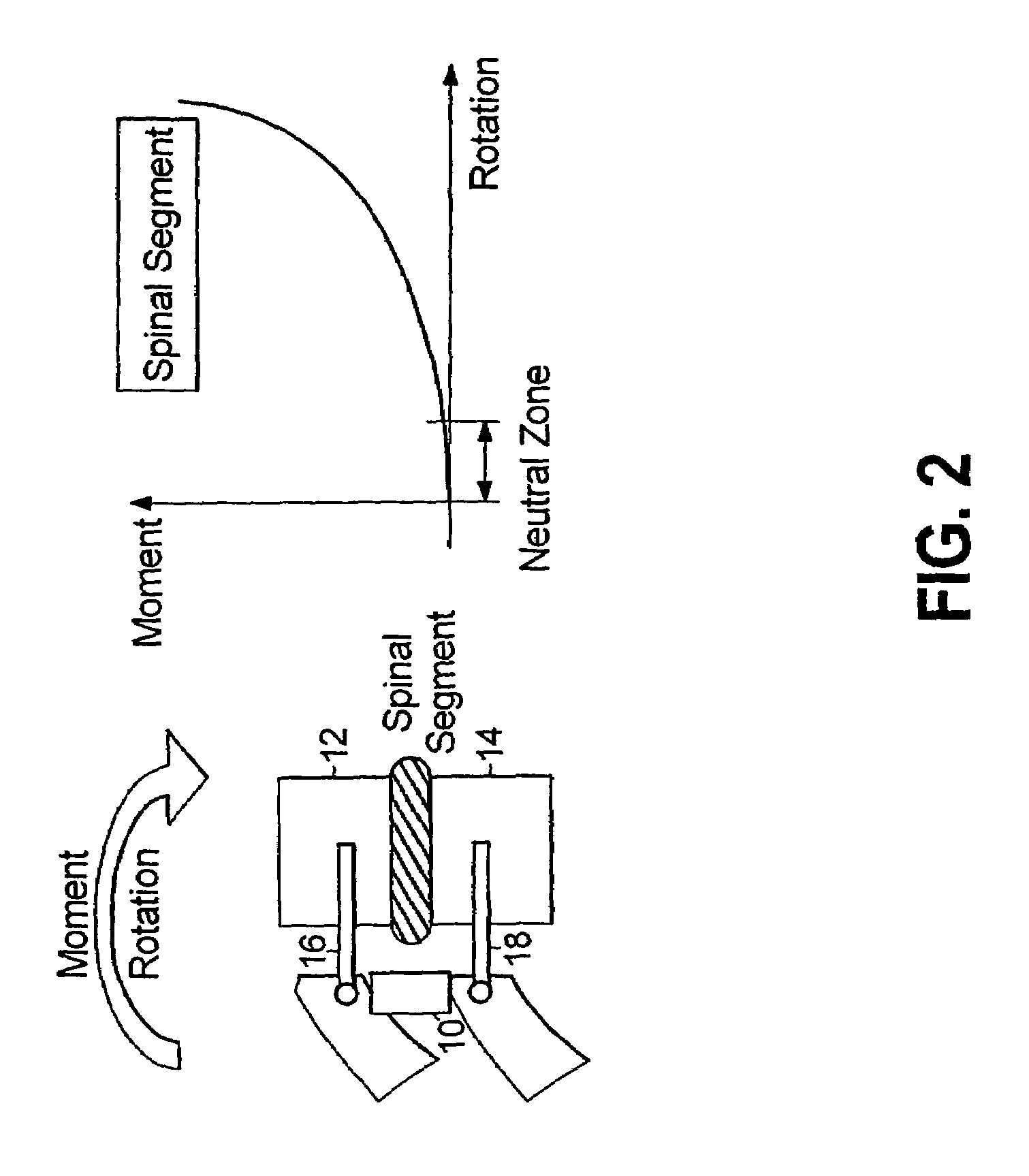Dynamic spine stabilizer
a spine stabilizer and dynamic technology, applied in the field of spinal stabilizers, can solve the problems of reducing the range of motion, accelerating degeneration at those levels, and affecting the quality of life of people, and achieve the effect of unrestricted angular motion of the spin
- Summary
- Abstract
- Description
- Claims
- Application Information
AI Technical Summary
Benefits of technology
Problems solved by technology
Method used
Image
Examples
Embodiment Construction
[0034]Exemplary embodiments of spinal stabilization devices, systems and apparatus (and associated methods) of the present invention are disclosed herein. It should be understood, however, that the disclosed embodiments are merely exemplary of the invention, which may be embodied in various forms. Therefore, the details disclosed herein are not to be interpreted as limiting, but rather as exemplary teachings that permit persons skilled in the art to make and / or use the disclosed devices, systems and apparatus (and associated methods).
[0035]With reference to FIGS. 2, 3a-c and 4, a method and apparatus are disclosed for spinal stabilization. In accordance with an exemplary embodiment of the present invention, the spinal stabilization method is achieved by securing an internal dynamic spinal stabilization device 10 between adjacent vertebrae 12, 14 and thereby providing mechanical assistance in the form of elastic resistance to the region of the spine to which the dynamic spinal stabil...
PUM
 Login to View More
Login to View More Abstract
Description
Claims
Application Information
 Login to View More
Login to View More - R&D
- Intellectual Property
- Life Sciences
- Materials
- Tech Scout
- Unparalleled Data Quality
- Higher Quality Content
- 60% Fewer Hallucinations
Browse by: Latest US Patents, China's latest patents, Technical Efficacy Thesaurus, Application Domain, Technology Topic, Popular Technical Reports.
© 2025 PatSnap. All rights reserved.Legal|Privacy policy|Modern Slavery Act Transparency Statement|Sitemap|About US| Contact US: help@patsnap.com



